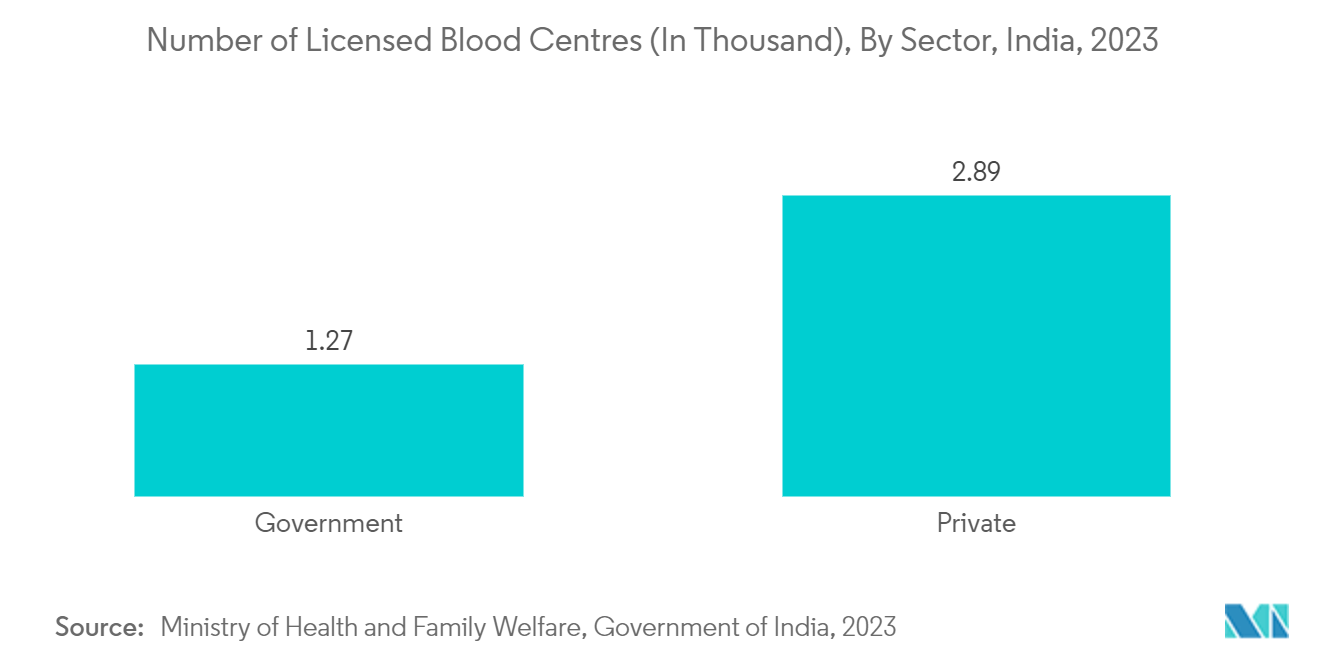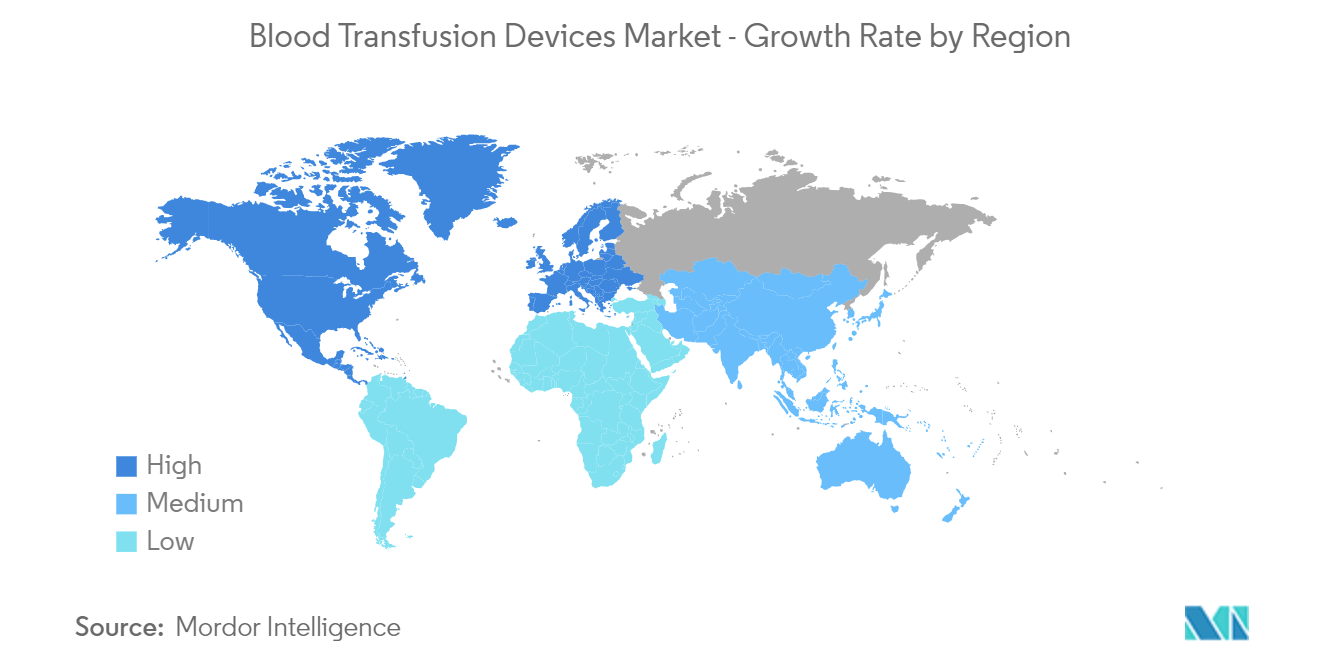Market Trends of Global Blood Transfusion Devices Industry
The Pathogen Reduction System is Expected to Witness a Healthy Growth Over the Forecast Period
The blood transfusion market's pathogen reduction system segment is poised for robust growth in the coming years. This surge in demand is driven by the advent of cost-effective, innovative solutions designed to inactivate or diminish infection risks. For instance, Cerus Corporation's INTERCEPT Blood System not only curtails the risk of transfusion-transmitted infections (TTIs) but also ensures pathogen reduction for platelet components. Such advancements offer invaluable solutions to blood centers and hospitals, ultimately safeguarding patients in need.
Primarily, the pathogen reduction system addresses leukostasis, a condition stemming from elevated white blood counts in leukemia, and manages transfusion-related infections. A December 2023 study in the International Journal of Transfusion Medicine highlighted the prowess of pathogen reduction (PR) technology. It underscored PR's capability to diminish the risk of TTIs, especially bacterial infections (TTBIs) associated with platelet concentrates (PCs). Given these insights, the segment's growth trajectory appears promising.
Moreover, the rise of new laboratories dedicated to blood research amplifies the demand for pathogen reduction systems, further fueling the segment's expansion. For instance, n December 2023, the FDA's Center for Biologics Evaluation and Research (CBER) announced plans for a new pathogen reduction laboratory within the Office of Blood Research and Review (OBRR) in the U.S. This lab's mission is to advance novel pathogen inactivation technologies, with aspirations of reducing or entirely eliminating the need for donor deferral and testing.
In conclusion, the combination of these devices' extensive applications and the inauguration of new blood research laboratories signals a promising growth trajectory for the segment in the foreseeable future.

North America is Expected to Witness Considerable Growth Over the Forecast Period
North America's market growth is fueled by rising trauma cases, an uptick in surgical procedures, technological innovations, and the dominance of key industry players. For instance, data from the Canadian Institute for Health Information, published in November 2023, highlighted a rise in hysterectomy rates in Canada. In 2022, the rate stood at 269 per 100,000 females, up from 234 the previous year. This uptick in hysterectomies, often necessitating blood transfusions, underscores the region's market growth potential.
Moreover, enhanced training and education on blood transfusion devices are poised to elevate their usage, further propelling market growth. A case in point: in May 2023, Terumo Blood and Cell Technologies launched an innovative training initiative in the U.S. This program is designed to aid cell and gene therapy manufacturers in optimizing their cell collection methods, thus accelerating therapeutic commercialization. Central to this initiative is apheresis training, a vital procedure for cell collection and a cornerstone in developing essential cell therapies. Given the rising surgical procedures like hysterectomies and the introduction of specialized training programs, the region is set for significant market growth in the coming years.


